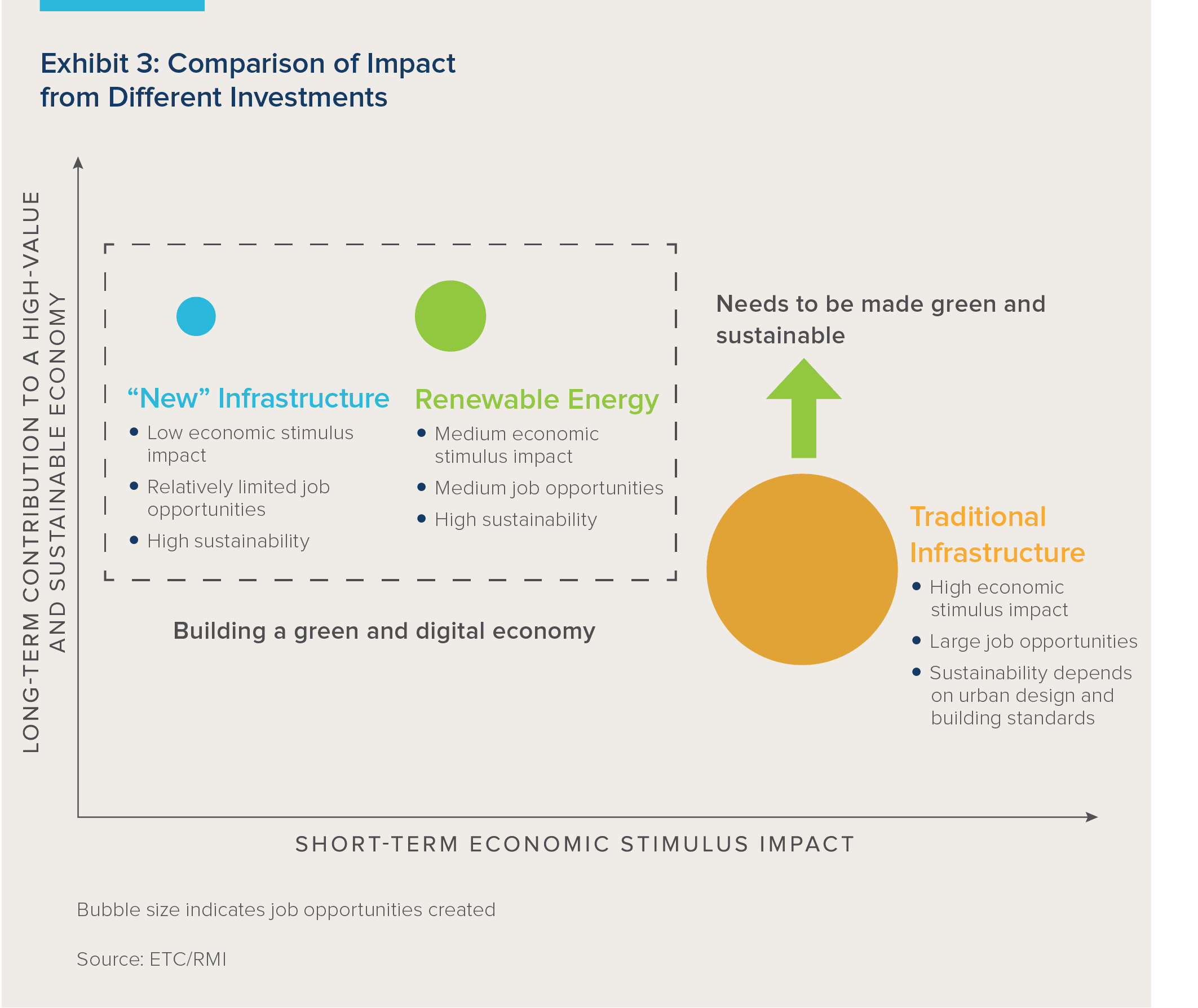
Report | 2020
Achieving a Green Recovery for China
Putting Zero-Carbon Electrification at the Core
The COVID-19 crisis has had a massive impact on economies across the world, with several governments now seeking to design recovery programs. Ideally such programs should not only support recovery from recession but help achieve greener and more sustainable economies for the future.
China has come through the COVID-19 pandemic with far fewer infections and deaths per capita than major Western countries. Its factories and distribution systems have returned to normal operations faster than expected. But with exports to Europe and the United States now likely to be severely depressed by recessions in those regions, China faces a year of slow growth and will need to stimulate domestic demand to spur economic recovery and job creation.
Based on specific characteristics of the Chinese economy and policies already in place, China’s stimulus should aim as best possible to encourage domestic consumption, and investment stimulus must play a significant role in economic recovery programs. If designed well it could not only stimulate the economy but help build a higher value-added and more environmentally sustainable Chinese economy. According to the government annual work program announced in May 2020, the Chinese government has acknowledged the importance of investing in new infrastructure, supporting new forms of higher-quality urban development, and accelerating the shift to new energy vehicles. Zero-carbon electrification should be a key focus alongside these priorities already identified.
China’s green recovery package should combine four main thrusts with the first one, zero-carbon electrification, at the core:
- Accelerate investment in zero-carbon electrification This should combine increased investment in wind and solar capacity, ultra-high voltage transmission lines, energy storage, and distribution grids, plus the accelerated rollout of electric vehicle charging infrastructure.
- Strengthen investment in “new” technology-based forms of infrastructure, such as 5G, artificial intelligence, internet of things, data centers, and optical fiber, which will build Chinese capacity in a range of vital future technologies.
- Ensure that investment in traditional infrastructure supports green and energy efficient urbanization.
- Promote green consumption, including via support for electric vehicles and more efficient electric heating systems.

